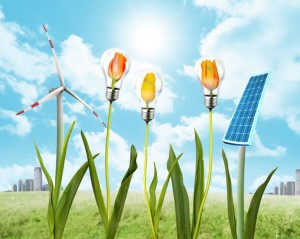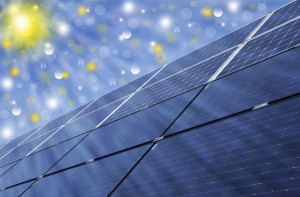For many people, clean energy just seems like a pipe dream that may never actually be realized. After all, we learn pretty early on in our lives that you can’t get something for nothing, and environmental damage as a result of energy production is just a fact that we have to live with. However the truth is that there are several viable forms of clean energy that have been put to use to great effect around the world and are being adopted into green technology advancements that are being integrated into our tech savvy culture. By adopting those practices that produce sufficient amounts of energy while still conserving resources and creating limited environmental impact, we can make progress towards a world in which clean energy is more than a dream. Here are five clean alternate forms of energy being used around the world today.
1. Nuclear
Now, not many people would think of nuclear power as a clean energy source, but the reality is that the energy produced through nuclear fission does so without generating any airborne pollutants. The electricity generated by nuclear power is plentiful and inexpensive (France leads Europe with its use of nuclear power, providing it with the cheapest electricity on the continent), and statistically speaking, nuclear plants are among the safest power plants in the entire world, both for humanity and the environment. Of course, there are still dangers associated with nuclear power. The possibility of a meltdown (small though that possibility is) and resulting radioactive waste that is a byproduct of the nuclear reaction are both major concerns. Still, new reclamation and safety procedures could go a long way towards reducing these threats.
2. Solar
Here it is, the ultimate clean energy source. Solar power relies on sunlight, which shines down across the entire planet free of charge. Solar energy is captured via solar panels, which utilize the photoelectric effect to force certain materials to release trapped electrons. These electrons are harnessed for energy, creating a simple and waste-free system. Currently, solar cells are somewhat difficult and expensive to produce, but certain companies, including home automation businesses such as Vivint, are doing what they can to decrease production costs and bring solar power into the homes of the world. Currently, Germany is the world leader in solar energy production, but as the technology becomes more affordable and dependable, then we’ll probably see nations around the globe rise up to embrace this clean and inexhaustible energy source.
3. Hydroelectric
Hydroelectric power, such as is produced at Hoover Dam, is one of the cleanest energy sources known today. It generates power by allowing the weight and pressure of the water to force itself through a turbine, which is attached to a generator. However, even though hydroelectric plants are able to create clean electricity, they often require that a river be dammed up to create the necessary pressure. This results in some devastating effects on the local plant and animal life, essentially destroying the surrounding ecosystem. At the same time, for many areas without access to flowing or standing water, hydroelectricity would be completely unfeasible.
4. Wind
Unlike water, air is a resource that can be found in every part of the globe. When the air moves and creates wind, that wind can be used to move turbines and generate electricity. Countries around the world have discovered that by placing large windmill-like structures in windy areas, they could generate clean, renewable energy at very little cost. Germany and the United States have both lead the world in wind-energy production at different times, and currently China is the world’s largest producer of wind energy. On the downside, wind farms can have a negative impact on local wildlife and generate noise pollution. Likewise, for a wind farm to be able to generate usable amounts of electricity, it must often consist of dozens of turbines, which can be seen as unattractive additions to the natural landscape. Some of these issues can be combated, however, by using offshore wind farms.
5. Geothermal
Geothermal plants operate much like regular steam turbine power stations in that they use a heat source to increase the temperature in a liquid, producing steam which in turn moves a turbine attached to a generator. The difference with the geothermal power plant is that the heat is provided by the natural geothermal properties of the earth’s crust. This cuts down on harmful byproducts from burning fuels, thus making geothermal power an attractively clean energy source. Once again, however, its usefulness all depends upon location. For countries that are located in highly geologically active areas (such as Iceland and the Philippines), geothermal power is easily harnessed and converted into usable electricity. Other areas without geothermal fields would get much less out of a switch to geothermal power.

